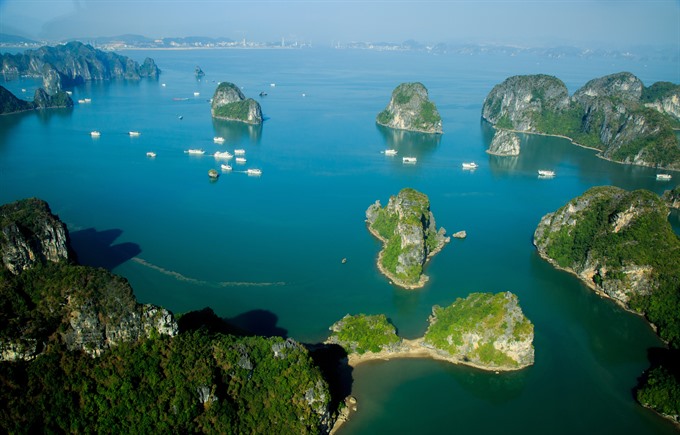The northeastern province of Quang Ninh is striving to promote green growth at its world natural heritage site Ha Long Bay, according to a local official.

Vice Chairman of the provincial People’s Committee Dang Huy Hau recently assigned the provincial Department of Planning and Investment to draft a plan to improve the quality of green growth projects in the bay for 2020-2025, as well as expand existing efforts across the locality.
Among the projects mentioned is one being implemented by the Japan International Cooperation Agency (JICA). The second-phase of the project has been jointly carried out by the provincial People’s Committee and JICA from November 2016 to present to promote green growth in the Ha Long Bay through the adoption of sustainable environment and tourism development policies.
The main targets of the second phase are strengthening the management of funds and financial mechanisms; promoting incentives to support energy management and saving; enhancing sustainable tourism in the area; improving environmental management capacity; and raising public awareness of green growth.
Local authorities and JICA representatives discussed measures to promote green growth in Quang Ninh during the next phase of the project such as improving the efficiency of environmental protection funds, and increasing the collection and treatment of waste water.
Hau said Quang Ninh will set annual targets and direct relevant departments and sectors to help local authorities carry out the next phase of the project.
He asked JICA to provide financial support for organic agriculture in the province and pay more attention to environmental protection and management in Ha Long Bay.
Ha Long Bay literally “descending dragon bay” is a must-see destination in Quang Ninh province. It was recognised as a UNESCO World Heritage Site in 1994 and 2000.
The bay spans 1,553 square kilometres and includes 1,969 islands of various sizes. It features thousands of limestone karsts and islets in various shapes and sizes. The limestone in the bay has gone through 500 million years of formation in different conditions and environments. The geo-diversity of the environment has created biodiversity, including a tropical evergreen biosystem, oceanic and sea biosystem.
Ha Long Bay is home to 14 endemic floral species and 60 endemic faunal species.
In April 2019, US-based newspaper Business Insider made a list of 35 most beautiful natural wonders around the world, in which Vietnam’s Ha Long Bay claimed a place.
According to the news website, the beauty of Ha Long Bay makes it one of Vietnam’s top tourist sites. It also recommends that tourists see the UNESCO-recognised site’s awe-inspiring limestone towers by boat.
Previously, Ha Long Bay was ranked 14th in Business Insider’s list of the 100 most beautiful UNESCO World Heritages in 2018.
So far this year, Ha Long Bay has gained a lot of global titled. In July, the bay was listed among the world’s most beautiful sunrise spots by the Microsoft Network (MSN).
In August, British travel magazine Rough Guides included Ha Long Bay in its selection of the 100 most beautiful places to visit next year.
In the Rough Guides to the 100 Best Places on Earth, the magazine describes “the scattering of limestone pinnacles jutting out of the smooth waters of Ha Long Bay”, around four hours east of Hanoi, as an “incredible sight”. The bay was the only Vietnamese destination in the list.
In September, Ha Long Bay was named as one of the most popular attractions in Asia, according to the South China Morning Post (SCMP) based in Hong Kong.
Around 5.2 million foreigners visited Ha Long Bay in 2018, up 22 percent from a year ago, accounting for 30 percent of the 15.6 million foreign tourist arrivals to Vietnam.